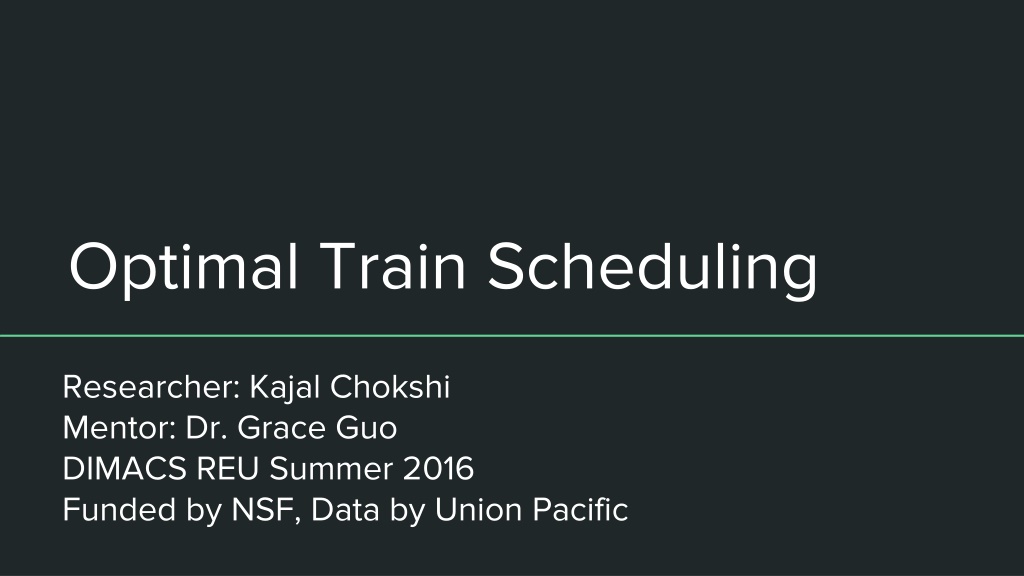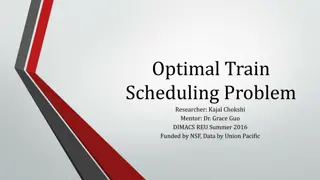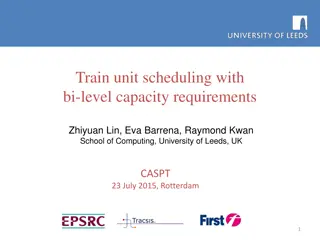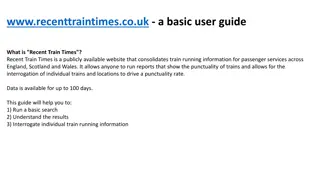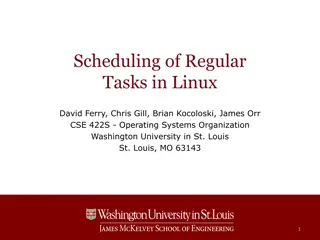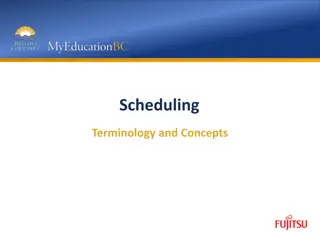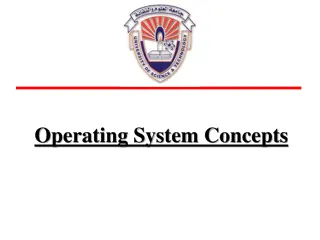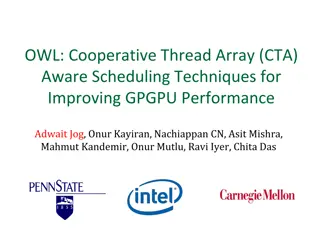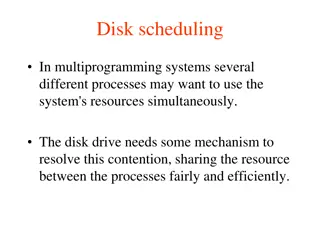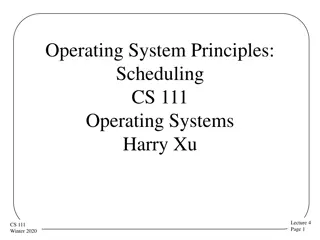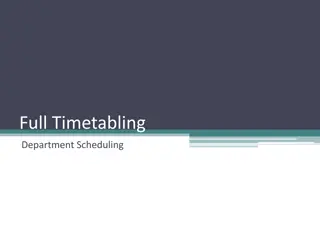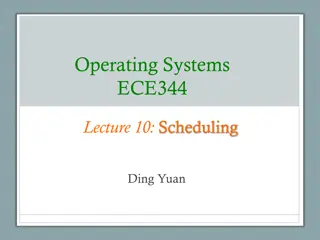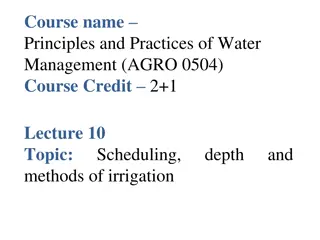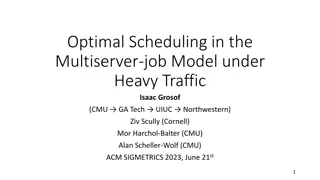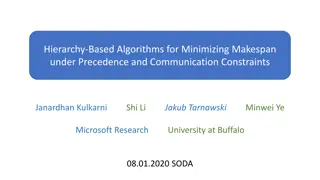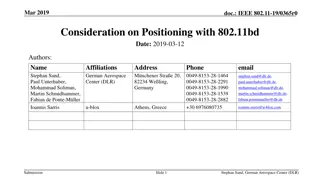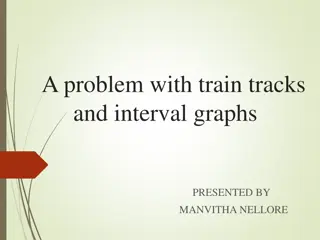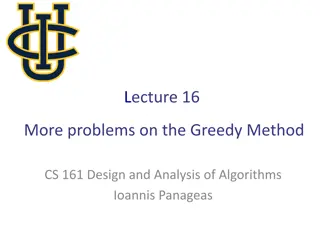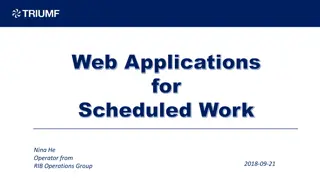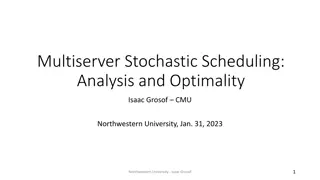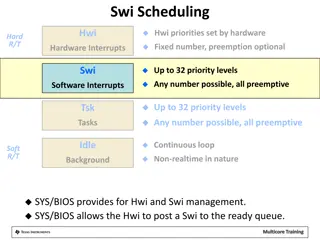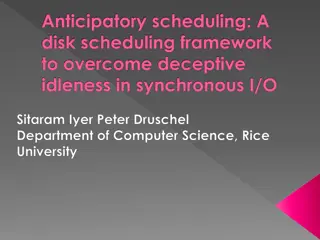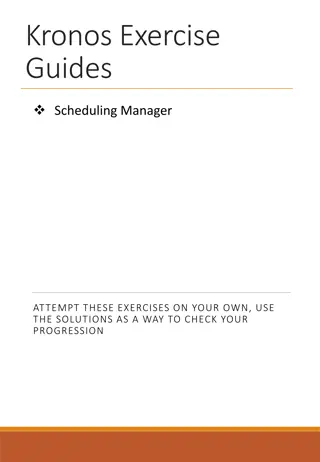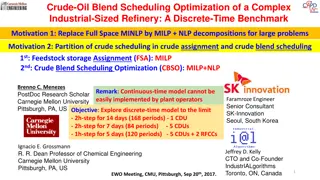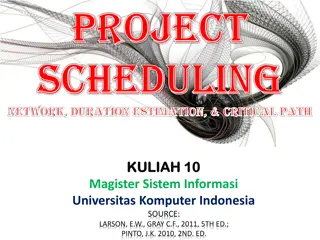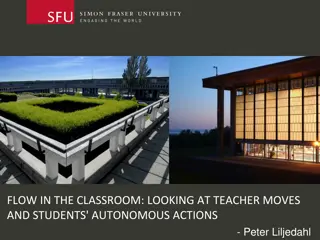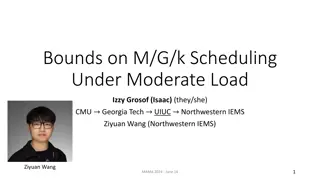Optimal Train Scheduling Research at DIMACS REU
Research conducted by Kajal Chokshi and Dr. Grace Guo at DIMACS REU in 2016 focused on scheduling trains on single tracks to optimize operations, considering various constraints such as train conflicts, overtaking, and delays. The study analyzed datasets from Union Pacific to create models for decision support and planning tools, aiming to minimize delays and costs in train schedules.
Download Presentation

Please find below an Image/Link to download the presentation.
The content on the website is provided AS IS for your information and personal use only. It may not be sold, licensed, or shared on other websites without obtaining consent from the author. Download presentation by click this link. If you encounter any issues during the download, it is possible that the publisher has removed the file from their server.
E N D
Presentation Transcript
Optimal Train Scheduling Researcher: Kajal Chokshi Mentor: Dr. Grace Guo DIMACS REU Summer 2016 Funded by NSF, Data by Union Pacific
Scheduling trains on single tracks depending on various constraints Model created in past for two main objectives Decision Support tool Planning tool Overview
Definitions Train Conflict- Crossing: Two trains approach each other on a single line track and the continuation of either or both train s journey wouldn t be possible Overtake: A faster train catches up to a slower train travelling in the same direction
More Definitions (Given by A. Higgins) Siding- A section of a track which can be used for the crossing and passing of trains under single track operations Conflict Delay- Delay to a train if it must wait at a siding for another train to cross or takeover Risk of Delay-The expected amount of delay due to unforeseen events Total Delay- Weighted combination of conflict delay and risk of delay Ex. Two trains unable to stop at the same siding, causing conflict delay
Given Information Dataset from a company regarding single track train schedules Background information regarding optimization
Dataset Ex. Train Symbol: ACYBAX Train Category: Auto Alpha Origin: Cheyenne Alpha Destination: Barnes Modifier: Extra
Dataset Continued Ex. Continued Traveling West from La Grande Huntington Nampa From the Excel Dataset, we see this train stopped 9 times in segment- Why is that? Possible ways to make route more efficient by considering other constraints? How can we predict the behavior of the train without having a dataset provided by the company?
Visualize the data using SAS programming Goals Generate data for simulation by building a probability distribution Minimize delay and cost
References A. Higgins Optimal Scheduling of Trains On a Single Line Track Ph.D. Thesis, Faculty of Science, Queensland University of Technology (1996) A. Higgins Modelling the Number and Location of Sidings on a Single Line Railway Ph.D. Thesis, Faculty of Science, Queensland University of Technology (1997) Union Pacific Trainline Dataset
